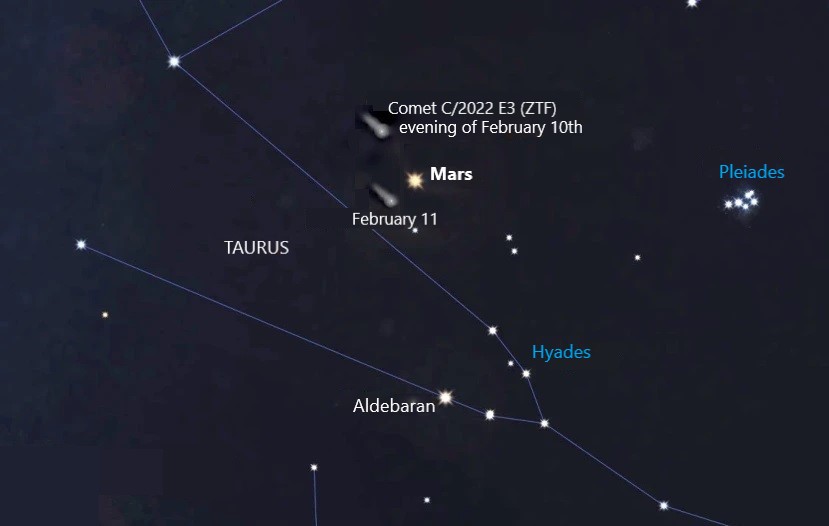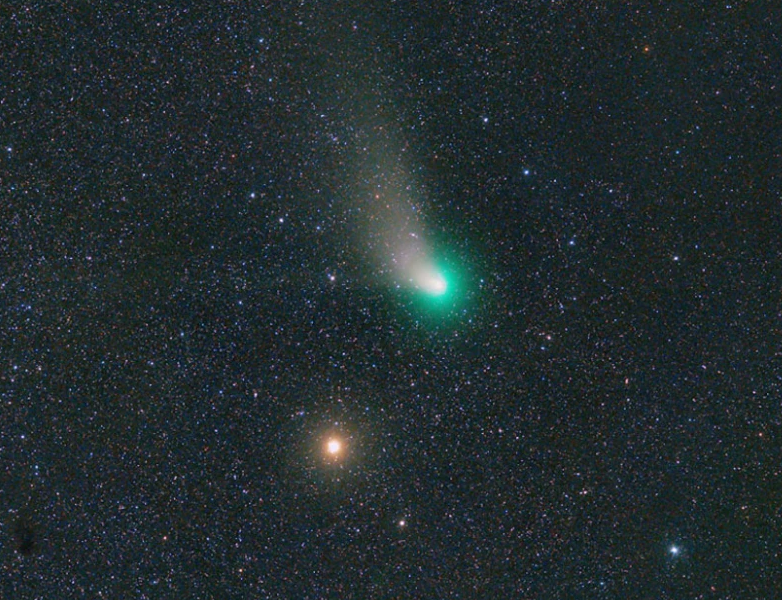If a comet has a visible brilliance less than the 3rd magnitude, most often it looks like a faint hazy spot in the sky and is not particularly striking. For those who have recently become interested in astronomy, it will be quite difficult to find it. But bright stars and planets can help in this, near which “tailed guests” sometimes pass. This is exactly what will happen on February 10-11 with comet C/2022 E3 (ZTF). These days it will be on the celestial sphere not far from Mars.
On February 10, around 9 p.m., comet ZTF was in the sky about 2° above the Red Planet, having a shine slightly weaker than 6°. They could easily be seen in the same field of view of small binoculars. The closest rapprochement will take place on February 11 at about two o’clock in the afternoon, GMT+2. The actual distance from Earth to Mars at this moment will be 0.975 AU (146 million km), to the comet — 0.436 AU (65 million km), that is, in space they will be separated by more than 80 million km. Both celestial bodies are now moving in the constellation Tauri. For astrophotographers who decide to capture a rare “celestial date”, a big difference in the brightness of objects, amounting to more than 6 stellar magnitudes, will be a serious challenge, that is, the luminous flow from them will differ by almost 400 times.

On February 11, astronomical twilight in Kyiv will begin at about 06:20 p.m. By this time, the comet will not have time to “crawl” far from Mars — the apparent distance between them will not exceed one degree. Now they will be visible in one field not only with binoculars, but also with a small telescope. The Moon will rise after 11 p.m. on this day (February 10 — an hour earlier), so in the absence of clouds, we will get almost 5 hours of normal dark sky to admire this rare “heavenly date”.

But the rapprochement of the “tailed guest” with bright celestial bodies will not end there. On the evening of February 14, it will take place 1.5° east of Aldebaran (α Tauri) — the brightest star of the zodiac belt, which over 200 thousand years ago was also the brightest star of the entire night sky. The total brightness of comet ZTF on this day will decrease to the 7th magnitude.
Follow us on Twitter to get the most interesting space news in time
https://twitter.com/ust_magazine

